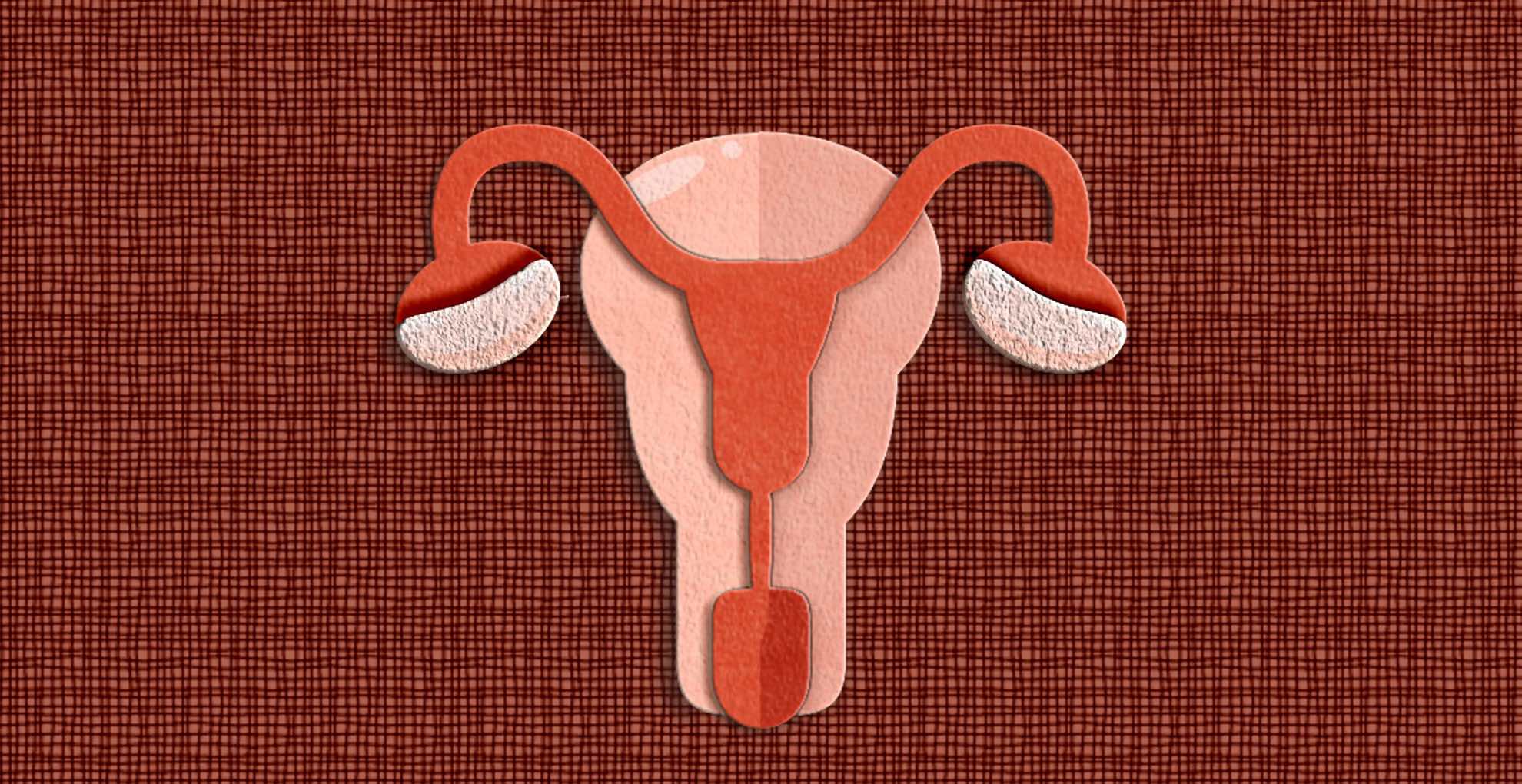What Can Menstrual Blood Reveal about Health and Disease?
About seven years ago, Christine Metz, a biomedical researcher at the Feinstein Institutes for Medical Research in New York, had an idea for a study of endometriosis, a painful disease in which the type of tissue that lines the uterus begins to grow on other areas of the body. Currently, a formal diagnosis requires an operation performed under general anesthetic. Metz wondered, among other things, if patients could be correctly diagnosed using a less invasive approach.
To recruit people for her study, Metz reached out to physicians, hoping they would ask their patients to participate. But the doctors balked. “’People told us, ‘Oh I can’t ask my patients to do something like that,’” she recalled, where “that” referred to providing samples of menstrual blood. “There was definitely a ‘yuck’ factor,” said Metz.
Metz decided to recruit patients directly using social media and news publicity, and since then, she said, more than 2,000 women have been more than happy to use designated menstrual cups or external sponges and mail their blood back to the lab. They are highly motivated to help advance researchers’ understanding of a disease that is underdiagnosed, difficult to treat, and sometimes debilitating.
It’s “appalling” that more scientists — whether they’re studying endometriosis or not — aren’t studying menstrual blood, which contains a combination of blood and tissue that lines the uterus, said Metz. Researchers routinely examine saliva, mouth tissue, skin, and even teeth, looking for clues about health and disease. By contrast, said Metz, menstrual effluent has been neglected.
Metz is one of a handful of scientists worldwide studying menstrual blood; these researchers are looking into its potential as a diagnostic marker for diabetes, gynecologic diseases, and even toxic exposures. Because the work is still new, it could be years, even decades, before any findings influence clinical care. For now, however, the researchers are challenging the conventional view that menstrual blood is merely a waste product. Instead, they said, careful examination of this biological specimen may yield important insights into health and disease.
As a medical student in Denmark, Sara Naseri, CEO of the health care service startup Qvin, was frustrated by how often a late diagnosis prevented patients from receiving optimal treatment for their diseases. She wondered if she could develop a better way for patients to monitor their health status and catch issues before they became serious or irreversible.
Blood tests are one of the most commonly used and trusted screening tools in doctor’s offices and labs, and “one day it just hit me that ‘wait a minute, women bleed every month — why has nobody used it’” to monitor their health, she said. Menstrual blood screening wouldn’t require needles or a trip to a doctor’s office. Individuals could test themselves more frequently and keep an eye out for any changes.
In 2016, Naseri took a year off from medical school to study menstrual blood and see if it had diagnostic capabilities similar to those of blood taken from the crux of patients’ elbows. She recalled one classmate saying her idea was “gross.” That student happened to be studying feces at the time. When she returned to medical school, she continued her research.
Naseri has spent the last six years trying to understand the diagnostic potential of menstrual blood. Much of her research has been conducted at the Stanford University School of Medicine, where she is currently a visiting scholar. She has co-authored papers with Paul Blumenthal, Ryan Brewster, and Klaira Lerma, researchers at the Stanford Medical School who are not affiliated with Qvin. Together, they have found some striking similarities between the two types of blood samples. For levels of cholesterol, hormones related to fertility, and HbA1c (a measure used to evaluate diabetes status) she’s seen “very, very, very high correlation,” meaning, for example, that if a woman’s cholesterol is high in her menstrual blood, it’s also high in her circulating blood.
Now, Naseri is getting ready to launch Qvin, which will use menstrual pads to collect samples that will be sent to a lab and tested for some of these health-related substances. Women will then be able to view their results in a cell phone app that can track changes over time. As far as privacy goes, she says the company wants “to figure out how we can make it possible for women to utilize technology to track their periods, as they should be able to, without it being a threat to their personal health care.” (Since the app doesn’t pose a risk to users if it malfunctions, it will not need to be regulated by the FDA.)
Naseri hopes that eventually, menstrual blood can be more than just a proxy for traditional blood draws. Blumenthal, an OB/GYN at Stanford Health Care, presented an abstract at the American College of Obstetricians and Gynecologists conference in May suggesting that menstrual blood could be used to screen for human papillomavirus, or HPV, the virus associated with cervical cancer that is usually found through a pap smear conducted at the doctor’s office.
Metz has been studying endometriosis for decades. Initially, she studied samples provided by surgeons after they had removed the problematic tissue from the organs of patients with severe symptoms. But these samples could only tell her so much about the cause of the disease. She compared the situation to a house fire — it’s difficult to identify the cause after the house has burned down.
About seven years ago, Metz started thinking about collecting menstrual blood instead of biopsies. At first, she and her team weren’t sure what to look for. During normal menstruation, menstrual blood flows out of the vagina, but also back up into the pelvic cavity, the space between a person’s pelvic bones that houses their urinary and reproductive organs. The team suspected that in women with endometriosis, this blood might be carrying endometrial tissue outside of the uterus that exhibits certain cellular characteristics that might make the tissue more or less likely to seed in other parts of the body or promote the growth of lesions.
In 2013, Metz and her team launched the Research OutSmarts Endometriosis (ROSE) trial. Initially, the scientists provided menstrual cups to just 22 women, eight of whom had previously been diagnosed with endometriosis. The women were asked to collect their menstrual blood on their heaviest days, typically the first two days of their periods, and mail it to the research team. The scientists analyzed specific cells in the menstrual blood and found some genes are regulated differently when comparing women with and without endometriosis.
In February, her team posted a study online, which is currently being peer reviewed, in which they sequenced genes from the endometrial tissue in the menstrual blood of 33 women and found genetic differences that mirrored the ones they’d previously found in the menstrual blood. Those with the disease had very low numbers of two specific types of cells: a type of immune cell called uterine natural killer cells, and decidualized stromal cells, which play an important role in initiating pregnancy. Instead, those with endometriosis had an abundance of pro-inflammatory stromal cells.
The findings could eventually help doctors diagnose endometriosis patients faster and without surgery. “So much of gynecology is surgical and invasive,” said Shruthi Mahalingaiah, an OB/GYN at the Harvard T. H. Chan School of Public Health. She believes physicians and patients would welcome a diagnostic approach like the one Metz tested.
Sarah Hillstead, a participant in the ROSE trial, agrees. For about 10 years, doctors maintained that her symptoms were “all in her head,” she said. When she was finally diagnosed with endometriosis, doctors found endometrial tissue on all of her organs, even her brain stem. She hopes that future patients can be diagnosed and treated faster than she was.
Hillstead’s experience is not unusual. It regularly takes 4 to 11 years after a woman starts feeling symptoms to be diagnosed with endometriosis. And even once they’re diagnosed there’s “a lack of effective and tolerable treatments,” explained Metz. She hopes the new insights will help with both issues.
“This pain is real for people,” said Hillstead. “I don’t want people to have to suffer like I have.”
Mahalingaiah is studying the potential links between women’s reproductive health and exposure to environmental toxins. While growing up in the U.S., she regularly visited India with her family. Though she appreciated the beauty of the more remote areas, anytime she came back near cities, she said, her eyes would sting and she could barely breathe in the air. “Our bodies are just a very thin barrier,” she said between the pollution in the environment and the delicate tissue inside us.
In her early work, Mahalingaiah surveyed women living in areas with different levels of particulate matter in the air. “With every increase in particulate matter exposure, there was an increased risk of irregular periods.” She wondered why. She initially suspected that women’s reproductive organs might be spared some toxic exposures, because they’re isolated from our respiratory and digestive systems that take in outside air. She said she “wanted to think of them as like some pristine mountaintop where no toxicicants really get to.” But she was wrong.
After meeting Metz and her Feinstein Institutes colleague Peter Gregersen, co-directors of the ROSE study, at an NIH conference, Mahalingaiah decided to look for clues in the menstrual blood of four women. In doing so, she and her team detected chemicals found in foods and cosmetics that are suspected of disrupting hormones and reproduction including phenols, parabens, phthalates, and organochlorides.
Emily Silva, a Ph.D. candidate in Mahalingaiah’s lab, presented the preliminary results of the not-yet-published pilot study at the International Society for Environmental Epidemiology annual meeting in August 2021. Mahalingaiah wonders if exposure to the chemicals on the skin or in the air could influence endometrial cancer risk, irregular periods or recurrent pregnancy loss. In measuring exposures in the menstrual blood, Mahalingaiah said “you’re getting an organ-specific amount of the exposure.”
“There could be unique applications of this,” said Mahalingaiah. “I just don’t think people are aware of it or used to it.”
Metz is on a mission to de-stigmatize the use of menstrual blood in research. She recently penned an op-ed in Scientific American suggesting that without that stigma, we might already have found better treatments or cures for diseases like endometriosis.
Naseri added: “Menstrual blood, sadly, is still very much regarded as something dirty. It’s a taboo.” She hopes to play a play a role in “changing the conversation about what menstrual blood is, from not being just a waste product, but really something uniquely valuable for women.”
Emma Yasinski is a science journalist. Her work has appeared in National Geographic, The New York Times, Smithsonian Magazine, Discover, MedShadow.org, The Scientist, Vice, NEO.LIFE, TheAtlantic.com, NPR Shots, Kaiser Health News, and The American Society of Hematology Clinical News.













Comments are automatically closed one year after article publication. Archived comments are below.
I’m past menopause but the article resonated with me. From my first menstrual period at 13 (which lasted 11 days and a very heavy flow for 7 days) till my hysterectomy with one ovary left at 34, I dreaded my periods. Every single one was extremely painful. I missed school and work days regularly due to the pain and heavy flow.
Even when I presented the doctors with the globs of ‘flesh’ sloughed off (NOT dark clots) plus one time a very obvious polyp with ‘roots’, I wasn’t believed. It wasn’t till I had a caring young woman doctor that finally something was done. I was later told by the surgeon my organs were basically glued to my bladder and intestines by adhesions. He also found a large blood-filled cyst on one ovary and fibroids embedded in my uterine wall.
It’s interesting that organochlorides were mentioned. I grew up on a hobby farm until I was 6. My father *very* liberally used DDT in the vegetable garden, the barn and animals, and in a liquid spray on the door screens against flies. I remember sitting in our tomato patch with a salt shaker to sprinkle on the tomatoes that I first licked so the salt would stick. I’d wipe off a powder – likely DDT – before I licked them. I had no sisters to compare symptoms with but I often wondered how much DDT contributed to what I had.
Strangely, I had no difficulty getting pregnant, nor did I ever have PMS or any menopause troubles. Perhaps my reliance on soybeans for protein protected me against those problems.